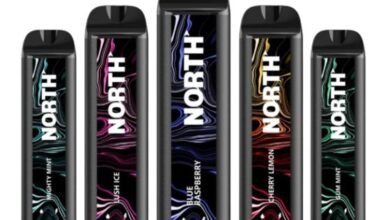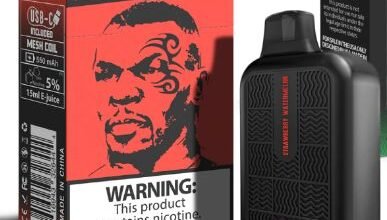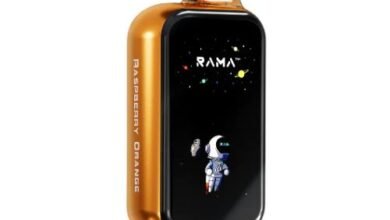Best Ear Protection for Shooting: Top Options for Safety
Best Ear Protection for Shooting: Top Options for Safety

Shooting sports are thrilling and widely enjoyed by hobbyists and professionals alike. But the loud, explosive sound of a firearm can cause serious damage to your ears if left unprotected. While many participants invest in high-quality firearms and ammunition, ear protection is often overlooked—until it’s too late.
This guide takes you through the importance of ear protection in shooting sports, the science behind how shooting can impact hearing, and how to choose the right protection to safeguard your ears for years to come.
Why Ear Protection is Crucial in Shooting Sports
The sound of a gunshot can exceed 140 decibels (dB)—a level that is more than sufficient to cause permanent hearing damage. For context, prolonged exposure to sounds above 85 dB can lead to hearing loss. Given this, shooting without ear protection even for a short period can have a lasting impact.
Without proper safeguards, shooters risk developing Noise-Induced Hearing Loss (NIHL) and conditions like tinnitus—a persistent ringing in the ears. The impact is not just limited to hearing but can affect focus, performance, and overall enjoyment of shooting sports. Ear protection is not just a safety measure; it’s an investment in your long-term health.
How Loud Noises Affect the Delicate Anatomy of the Ear
To fully understand why ear protection is so important, it’s worth learning a bit about the anatomy of the ear and how extreme sounds can harm it.
The human ear consists of three main parts:
- Outer Ear: Captures sound waves and directs them to the eardrum.
- Middle Ear: Contains the small bones (ossicles) that amplify sound.
- Inner Ear: Houses the cochlea, where hair cells convert sound vibrations into signals for the brain.
When a gun is fired, the loud sound wave shocks the structures of the ear. The inner ear, particularly the sensitive hair cells in the cochlea, is at the greatest risk. Once these hair cells are damaged, they cannot repair themselves, resulting in permanent hearing loss. Over time, repeated exposure can worsen the damage significantly.
Types of Ear Protection for Shooting
The good news is that there is a wide range of ear protection options available to suit different needs and preferences.
1. Earplugs
Compact and affordable, earplugs are a popular choice for shooters. These are inserted into the ear canal to reduce noise. High-quality foam or custom-molded plugs offer better protection by ensuring a snug fit.
- Pros: Lightweight and portable
- Cons: May not provide consistent protection if not inserted properly
2. Earmuffs
Earmuffs are worn over the entire ear and provide a higher Noise Reduction Rating (NRR) compared to standard earplugs. Some models are electronic and amplify low-level sounds while blocking harmful high-level noise.
- Pros: Easy to use with consistent protection
- Cons: Bulky and less portable
3. Electronic Hearing Protection
Electronic protectors combine the benefits of earplugs and earmuffs with advanced technology. They enhance situational awareness by amplifying safe sounds, such as conversations or environmental noise, while suppressing harmful noise levels.
- Pros: Excellent for tactical shooting and group scenarios
- Cons: Higher cost compared to traditional options
4. Custom Molded Hearing Protection
These are tailored to fit your ears perfectly, providing optimal comfort and protection. They are typically used by professional shooters or enthusiasts who spend extended periods on the range.
- Pros: Superior fit and durability
- Cons: Costly and requires professional molding
Key Factors to Consider When Choosing Your Ear Protection
With so many options, how do you know which type of ear protection is right for you? Here are some critical factors to consider when making your decision:
1. Effectiveness (Noise Reduction Rating or NRR)
Look for products with a high NRR, measured in decibels, to ensure adequate protection. A higher NRR means better noise reduction, with many shooting-specific protectors offering ratings of 25 dB or higher.
2. Comfort
You’ll likely wear ear protection for extended periods, so comfort is essential. Poorly fitting options can lead to irritation or inconsistent protection.
3. Durability
Invest in high-quality materials that can withstand frequent use. Durable ear protection will save you money in the long run.
4. Compatibility
If you use additional equipment, like shooting glasses, ensure your ear protection is compatible and doesn’t interfere with other gear.
5. Cost
While budget options exist, prioritizing quality over cost will better serve your long-term hearing health.
How to Properly Use and Maintain Ear Protection
Even the best ear protection won’t be effective if not used or maintained correctly. Here are some quick tips to get it right:
- Proper Fit: Ensure earplugs are snug, and earmuffs fully cover your ears.
- Double Up: Consider using both earplugs and earmuffs in high-noise environments for added protection.
- Cleaning: Regularly clean reusable earplugs and earmuffs to prevent hygiene issues.
- Storage: Store your ear protection in a clean, dry place to prevent wear and damage.
Exploring Noise-Induced Hearing Loss (NIHL)
Noise-Induced Hearing Loss is one of the most common preventable health issues among shooting enthusiasts. The condition doesn’t just affect your ability to hear faint sounds—it can also interfere with communication, reduce social interaction, and lower overall quality of life.
Preventative Measures
- Avoid shooting without ear protection, even for short periods.
- Take regular breaks during shooting sessions to give your ears a rest.
- Monitor your hearing health with annual check-ups, especially if you frequently participate in shooting sports or other loud activities.
Frequently Asked Questions (FAQs)
Q1. Can I use regular earplugs, like those for sleeping, for shooting?
While better than no protection, standard earplugs often lack the high NRR needed for shooting. Opt for dedicated shooting ear protection to ensure better safety.
Q2. Are noise-canceling headphones suitable for shooting?
No, traditional noise-canceling headphones are not designed to handle the extreme noise levels of gunfire. Use specialized ear protection with a high NRR instead.
Q3. What is the recommended NRR for shooting?
An NRR of 25 dB or higher is typically recommended for shooting. If the environment is particularly loud, consider doubling up with earplugs and earmuffs.
Q4. How long can I wear ear protection safely?
You can wear ear protection for extended periods as long as they fit comfortably and don’t cause irritation. Take breaks as needed for your comfort.
Q5. Is hearing damage from shooting reversible?
No, once hearing is damaged, it cannot be reversed. This is why proactive protection is critical for all shooters.
Safeguard Your Hearing and Enjoy Shooting for Years to Come
Hearing loss from shooting is entirely preventable with the right measures. By investing in high-quality ear protection and following proper usage and maintenance tips, you can fully enjoy the thrill of shooting sports while preserving your hearing.
Remember, responsible shooting isn’t just about handling your firearm safely—it’s about taking care of yourself too. Explore our curated selection of top-rated ear protection and take your first step towards safer, more enjoyable shooting sessions.



